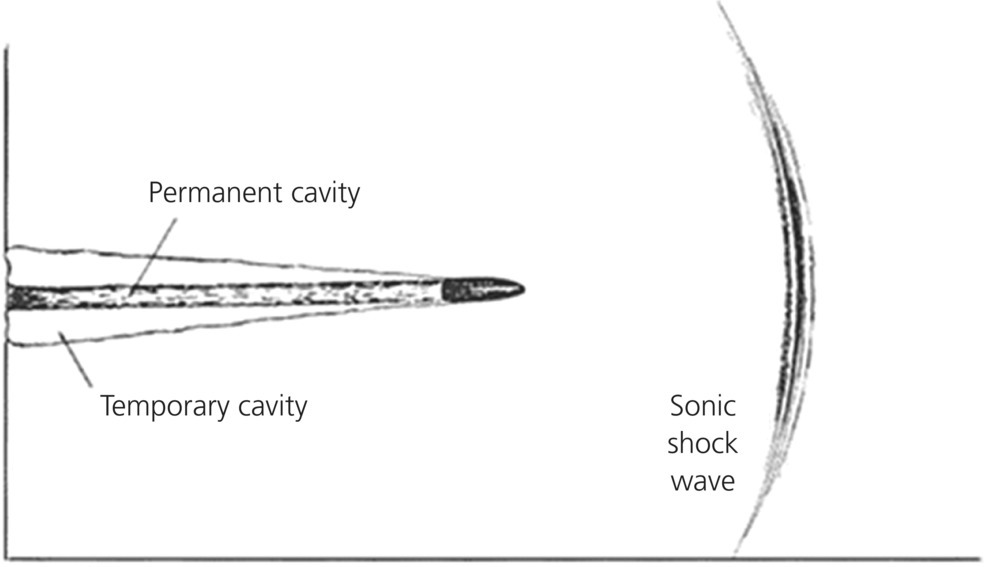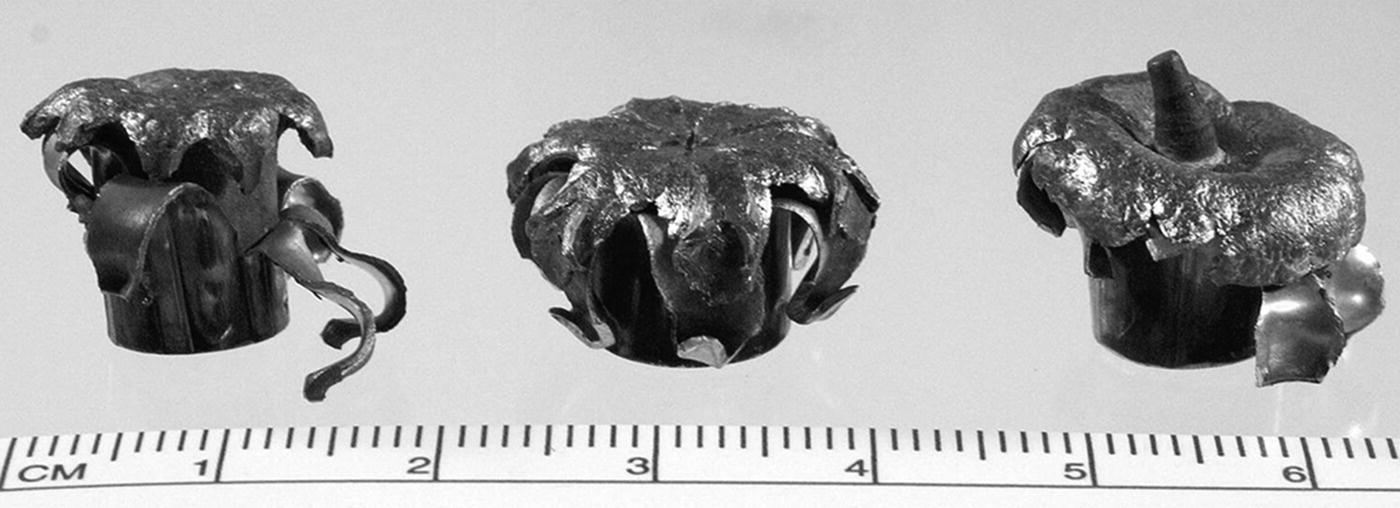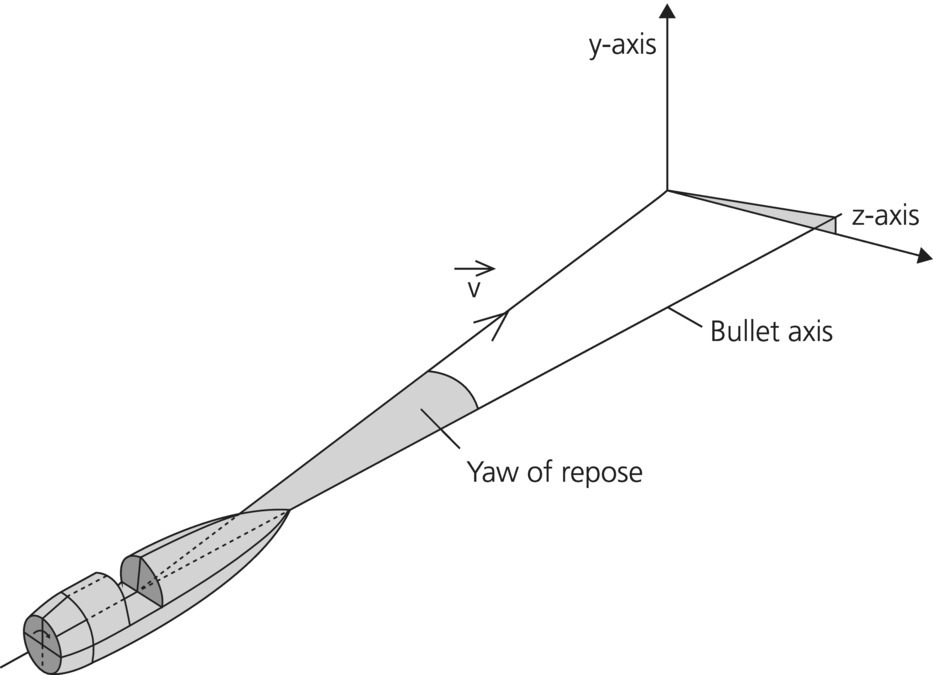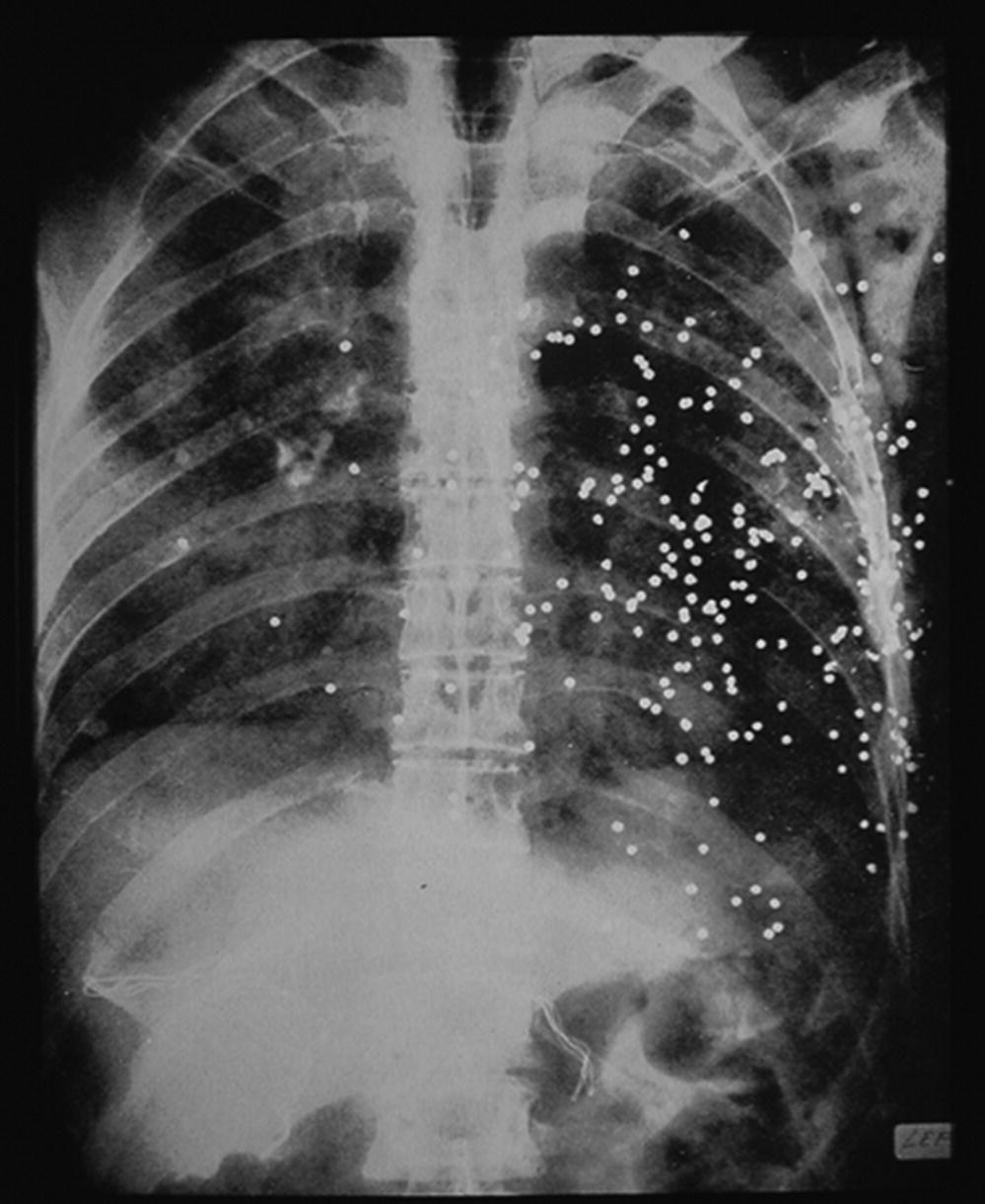Chapter 29 Michelle Welsford and Alim Pardhan Trauma is the leading cause of death for North Americans aged 1–34 years, only surpassed by cancer and cardiovascular disease in older adults. Penetrating trauma has significant morbidity and mortality and is a common cause for activation of EMS. Injuries due to firearms are particularly lethal and require rapid assessment and decision making in the field to mitigate injury. In 2009, approximately 700 deaths in Canada were associated with firearms, 75% of which were intentional self-harm [1]. In 2010 there were approximately 31,000 firearm-related deaths in the United States, of which approximately 61% were suicides [2]. Other potential causes of penetrating trauma include knives, arrows, nails, glass, wood, and wire. Penetrating trauma can also occur with shrapnel from explosions as well as with foreign objects flying in motor vehicle collisions. The types of weapons/projectiles, the way in which the object imparts its energy, as well as the location of impact, dictate the type and severity of injury. Two physical concepts explain injury associated with penetrating trauma. The energy associated with a moving object is defined by: kinetic energy = ½ mass × velocity2. Kinetic injury explains why a small and light projectile (e.g. a bullet) can result in devastating injury. Because the projectile energy is related to the velocity squared, doubling the velocity results in a four-fold increase in kinetic energy; if velocity increases by a factor of 4, kinetic energy increases by a factor of 16. In penetrating trauma, the projectile imparts kinetic energy to the victim’s body, resulting in injury. The second concept is the Law of Conservation of Energy: Energy cannot be created or destroyed but only transferred from one form to another. When a projectile enters the body and remains there, it can be inferred that all the projectile’s kinetic energy has been transferred to the body. Where the projectile travels through the body and exits, the energy transferred to the body is equal to the kinetic energy of the object before entering minus its energy on leaving the body. Weapons can usually be classified based on the amount of energy carried by the projectile. Ballistics, the study of projectiles as they move and hit their target, includes trajectory (the path that that an object follows after launch) and terminal ballistics, a more clinically relevant measure which reports how the projectile acts when it hits its target. Several factors affect terminal ballistics, including missile size, velocity, missile shape, deformity, and stability. As a general rule, the larger the missile, the more damage caused by direct contact between the missile and tissue. Larger missiles generally have a greater surface area and impart more energy faster. Bullet size is measured by the inside diameter of the gun barrel either in millimeters (e.g. 9 mm) or hundredths of an inch (e.g. 44 caliber). Magnum rounds refer to those with more gunpowder than a normal round, which increases the muzzle velocity and thus the bullet energy by 20–60% [3,4] (Figure 29.1). Figure 29.1 Bullets of various lengths and diameters, compared with an AA battery. Source: Reproduced with permission of Robert R. Bass. Missiles traveling through air encounter resistance or drag. Drag increases exponentially with velocity and is inversely proportional to mass. Clinically, this implies that the damage caused by a missile at short range will be greater than one fired at longer range and that heavier missiles are able to maintain their velocity better than light ones. For practical purposes, the impact velocity of bullets will be the same as the muzzle velocity at 45 meters for low-energy firearms, such as handguns, and 90 meters for higher velocity weapons, such as rifles [4]. Slower-moving missiles such as knives or arrows have less kinetic energy and cause injury only where in contact with tissue. Higher energy missiles, such as rifle bullets, create a shockwave and a cavity in the body tissues. This process is known as cavitation (Figure 29.2). Figure 29.2 Sonic wave and cavitation produced by a high-velocity bullet in tissue. Source: Reproduced with permission of Robert R. Bass. The energy imparted by a missile is related to its shape. Missiles that are blunt (i.e. have a higher cross-sectional area) experience more resistance and impart energy to tissues quickly, whereas sharper missiles cut through tissues more effectively and release energy over a longer period of time and distance. Projectiles may deform on impact, increasing the bullet’s cross-sectional area. This mushrooming effect raises the resistance between the missile and tissues, thus increasing the energy transfer rate. Some missiles may fragment on impact, increasing the rate of energy exchange because the total surface area of the fragments is greater than that of the original missile (Figure 29.3). Figure 29.3 Examples of bullet shapes and deformity designed to inflict tissue damage. Source: Reproduced with permission of Robert R. Bass. Contrary to popular belief, bullets often do not travel in a direct line and may tumble or wobble (yaw) in their course, often decreasing the velocity and accuracy of the missile. If it tumbles or yaws after hitting tissue, the bullet’s surface area with respect to tissue is increased, thereby increasing the amount and rate of energy transfer [4] and thus the extent of injury (Figure 29.4). Figure 29.4 Effect of yaw in creating a larger surface area of effect. Source: Reproduced with permission of Robert R. Bass. Knives and arrows are considered to be low-energy weapons. Although the projectile’s weight may be significantly higher, the velocity is generally much lower. Tissue damage is typically restricted to direct contact between the projectile and tissue. The extent of tissue damage can be extremely difficult to estimate because the projectile’s trajectory cannot be determined based on external injury appearance. The entrance wound will not predict whether the object moved around within the body or what organs it came into contact with. It is, however, useful to know the blade length; to a certain degree this can predict the maximum depth of penetration. Handguns are typically short-barreled, medium-energy weapons with small bullets. As a medium-energy weapon, a handgun’s damage-causing potential is more limited than that of higher energy firearms. Handgun bullets tend to have a blunter shape, causing early release of energy. Despite their shape and composition of softer metal (lead), handgun bullets tend not to deform due to their lower energy. As such, the bulk of the injury is caused in tissues damaged by the bullet’s passage. Rifles are named for the rifling in the barrel, which causes the bullet to spin. The spin of the bullet improves accuracy and range due to the conservation of angular momentum. Rifle bullets are larger, retain more kinetic energy, and travel much further with greater accuracy than do handgun projectiles. They are able to transfer significant energy with damage extending outside the bullet’s immediate track. Hunting ammunition is designed to expand dramatically (up to three times) on impact [4], increasing the speed of energy delivery and the wound pathway. Military ammunition is fully jacketed so it does not deform, which decreases the energy delivery rate [4]. While shotguns can fire single bullets (slugs), in general they fire a collection of spherical pellets, called shot, which radiate from the muzzle of the gun in a conical distribution. Typical muzzle velocity is 360 m/s [3]. Shot have a high drag coefficient so they lose velocity quite rapidly. At short range, they can be devastating but at longer range they lose much of their destructive potential (Figures 29.5, 29.6). Figure 29.5 Shotgun injuries to chest. Source: Reproduced with permission of Robert R. Bass. Figure 29.6 X-ray of shotgun injuries to chest. Source: Reproduced with permission of Robert R. Bass. While low-velocity projectiles inflict injury by direct cutting or tearing of tissues, higher velocity projectiles inflict injury in three ways: direct, pressure wave, and cavitation. Direct injury is caused by a projectile’s impact including crushing and lacerating tissues. Direct injury is based on the projectile size, although this may be modified by any deformation and bullet instability as it travels through the body. Crushing and laceration cause serious injury only if the bullet strikes organs or blood vessels [4]. Body armor protects the wearer by spreading the energy of impact over a larger area. Although this means that the projectile is prevented from hitting the body, the kinetic energy strikes a larger area, which can cause significant injury, such as fractured ribs and cardiac contusions. When a high-velocity projectile (greater than 750 m/s) hits human tissue, a high-pressure wave moves outward from the missile track in all directions. Caused by the compression ahead of the bullet, the pressure wave moves faster than the bullet itself. The faster and blunter the projectile, the greater the effect. Pressure from higher velocity bullets can exceed 1,000 pounds per square inch. Pressure waves travel better through fluids, higher density tissues, and organs, causing tearing and crushing of tissues. Blood vessels and solid organs (e.g. liver or spleen) can be injured or in some cases fractured. Hollow organs (e.g. large bowel) can rupture, and bones can be broken by the pressure wave (see Figure 29.2) [4]. High-velocity projectiles create a temporary cavity behind the missile path as tissues move away from the track. Cavity size is dependent on energy transferred during the bullet’s journey and may be 30–40 times the diameter of the bullet [4]. The cavity will have a lower pressure than the air outside the body, causing air and potentially debris to be pulled in through the entrance and exit wounds. After the bullet has passed, the elasticity of the surrounding tissues tends to collapse the temporary cavity (see Figure 29.2). Bullets often have both entry and exit wounds. In general, the exit wound is the same size or larger than the entrance wound but this is not always the case. Although bullets typically follow the path of least resistance, they may not travel in a straight line. Projectiles may have an unpredictable path within body tissues, including rotation or ricochet and deflection off bony structures. Two injury sites do not always represent an entry and an exit wound as they may represent two different entry wounds. Entrance wounds can be deceptively small. A very small entrance wound can hide a devastating injury, and EMS providers should not be lulled into a false sense of security by a small entrance wound.
Penetrating trauma
Introduction
Physics and mechanics of penetrating trauma
Ballistics
Size

Velocity

Shape and deformation

Stability

Types of weapons
Knives and arrows
Handguns
Rifles
Shotguns


High-velocity projectile injury
Direct injury
Pressure wave
Cavitation
Entry and exit wounds
Stay updated, free articles. Join our Telegram channel

Full access? Get Clinical Tree





